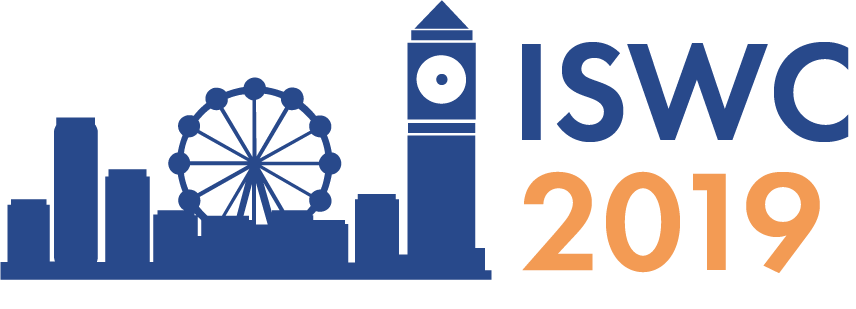ISWC 2019, the 23rd annual International Symposium on Wearable Computers, is the premier forum for research on wearable technology and topics related to on-body and worn mobile technologies. ISWC brings together an eclectic and interdisciplinary mix of visionary researchers, developers, designers, artists, manufacturers, and users to share information and advances in wearable technology. Contributions from a wide range of domains (including fashion design, computer science, textile engineering, electrical engineering, optics, human factors, sociology, anthropology, mechanical engineering, and medicine; among others) are encouraged.
ISWC invites submissions on all research related to technology that is worn on or interacts with the body, both the development and deployment thereof as well as the impacts and influences on individuals and cultures. ISWC looks for rigorous research contributions as well as highly creative ideas.
While this call focuses specifically on research contributions, interested parties should be aware that other submission categories are also open for design innovation, system demonstrations, and interactive workshop formats (see iswc.net for more information).
Areas Of Interest Include (but are not limited to):
-
Wearable systems and enabling technologies
- Displays, mobile augmented reality optics (freeform optics, lightguides, holographic and diffractive approaches)
- Haptics and actuators
- Sensing the body (movement, behaviour, physiology)
- Sensing the eye (gaze, patterns of looking, eye-computer interaction)
- Sensing the brain (wearable fNIRS, EEG, brain-computer interfaces)
- System architectures (networked and local), ad-hoc and mobile systems
- Manufacturing of wearable technologies
- Smartphone- and smartwatch-based systems and applications
- Power sources and management, thermal management
- Wearables and smart cities
- Cyber-physical systems, closed-loop sensing/actuation systems
- Biometrics and security
-
Textiles and clothing
- E-textiles, advanced textiles, and clothing-based wearables
- Functional clothing and non-electronic wearable technologies
- Novel materials
-
Information and Data
- Machine learning, big data, and artificial intelligence for wearables
- Datasets and performance evaluation
- Individual activity recognition and behavior analysis
- Social and group activity recognition
- Exploratory domain mapping and feature identification/extraction, ontologies for wearable applications
-
Human/Device Interaction
- Human factors and HCI of wearables, wearability, interaction design
- Anthropometrics and fit
- Design and conceptual innovation in wearables; art and fashion; theatre and performance
- Social interactions and impacts
- Human augmentation and portable environments
- Human-robot interaction
- Human/environmental/economic impacts, long-term effects, and future of wearable technologies, ethics and privacy
-
Applications
- All applications of wearable technologies interpreted broadly, including medical; sports; entertainment; supporting physical, cognitive, and collaborative work; extreme environments; mental health and therapy; education; virtual and augmented reality; research on behaviour, psychology, and cognition; and others
- Markets and consumer behaviour in wearables
Submission Types and Procedures
Paper types
ISWC accepts contributions of original, unpublished research in three lengths for blind, peer-reviewed manuscripts published and archived in the ACM Digital Library.
Full papers: substantial, rigorous research contributions. Papers should not exceed 8 pages in the ACM 2-column proceedings format (including references). Full papers generally include a substantial research activity supported by an in-depth evaluation. Contributions should demonstrate novelty as well as rigor.
Notes: novel, rigorous research contributions of smaller scope than full papers. Short papers may reflect a more narrow research question, but should not reflect early-stage (e.g. pilot, under-developed) research, or preliminary technological development without a robust evaluation. Notes should not exceed 4 pages in the 2-column, ACM proceedings format.
Briefs: novel research contributions of a narrow scope. May include system or technology development with limited evaluation. Briefs should not exceed 2 pages in the 2-column, ACM proceedings format. *Note that Briefs will likely not be presented in an oral format at the 2019 conference (briefs will be presented as part of a poster session).
Deadlines and reviewing procedures
All submissions are due on May 3, 2019 at 11:59pm HAST, and should be submitted through the submission site (to be announced shortly). First notifications for all papers will be sent out after June 7, 2019. Paper decisions will fall into these categories:
Accepted papers: final edits (in alignment with reviewer comments) will be prepared by the authors and lightly reviewed by the program chairs. “Camera-ready” (final) versions are due on July 15, 2019.
Shepherded papers: papers that require minor edits and/or format changes (e.g. re-formatting as a shorter paper length) may be assigned a program committee member as a shepherd who will work with the authors to ensure that the required changes are adequately completed. Revision timelines will be agreed between shepherd and authors, but must be fully complete and approved by the shepherd by the “camera ready” (final) paper deadline of July 15, 2019.
Revise and resubmit: papers that require major revisions (e.g. changes to content or data analysis) may be invited for resubmission in revised form (“revise and resubmit”). Revised and resubmitted papers will be reviewed by the same review panel as the initial submission. Revisions will be due no later than July 5, 2019, and final decisions will be distributed by July 9, 2019. “Camera-ready” (final) versions will be due by July 20 for revised resubmissions.
Reviewing Criteria
All papers are reviewed based on their scientific merit and contribution to the scientific progress in the domain of wearable technology. Submissions should demonstrate novelty (contribution above the state of the art); impact (contribution that furthers the state of the art in meaningful and significant ways, that can be translated and applied to new contexts); and rigor (contribution that is thoroughly supported with well-constructed evidence). For a more detailed view of the submission, review, and revision process, please see the ISWC Author Guide.
Questions? Contact the Program Chairs at programchairs-2019@iswc.net
Summary of key dates:
April 26, 2019: Submission deadline for Papers, Notes, and BriefsMay 3, 2019 (extended): Submission deadline for Papers, Notes, and BriefsJune 7, 2019: Decision notifications- July 15, 2019: Camera-ready deadline
Submission System
Submissions can be made at http://new.precisionconference.com/sigchi (On the submissions tab, please select SIGCHI society and ISWC 2019 conference. Then the submission track of ISWC 2019 Papers, Briefs and Notes will appear.)
